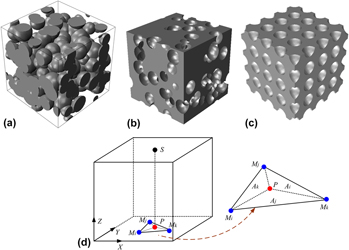Published online by Cambridge University Press: 16 April 2013

Optimization of the pore topology in organosilicate glass (OSG) is crucial in the development of dielectrics with an extremely low k-value and a relatively high Young’s modulus. In this paper, a finite-element modeling strategy is applied to develop a general understanding of the relationship between porosity, pore topology, and elastic modulus for the porous OSG thin films. This relationship in combination with the experimental elastic modulus data from nanoindentation (NI) studies is used to predict the pore structure of various OSG films. In addition, positron annihilation spectroscopy measurements are performed to determine the threshold porosity for the transition from nonoverlapping to overlapping porous structure. A similar threshold value is determined based on the finite-element modeling and experimental NI data.